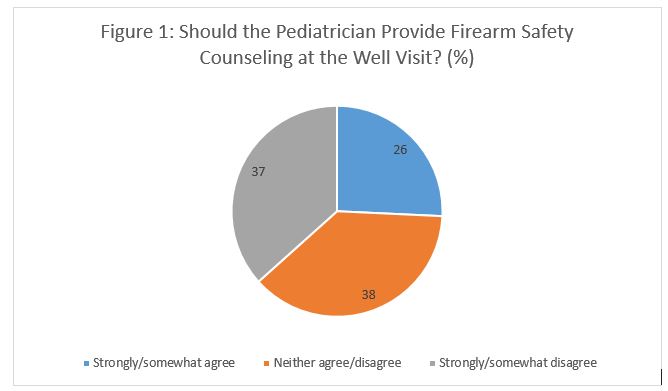Injury Prevention
Category: Abstract Submission
Injury Prevention I
119 - Firearm Safe Storage Counseling at the Well Child Visit: Parental Perceptions and Preferences
Sunday, April 24, 2022
3:30 PM - 6:00 PM US MT
Poster Number: 119
Publication Number: 119.329
Publication Number: 119.329
Sandra McKay, McGovern Medical School at the University of Texas Health Science Center at Houston, Missouri City, TX, United States; Liam Murphy, McGovern Medical School at the University of Texas Health Science Center at Houston, Houston, TX, United States; Zoabe Hafeez, McGovern Medical School at the University of Texas Health Science Center at Houston, Houston, TX, United States; Sheela Gavvala, McGovern Medical School at the University of Texas Health Science Center at Houston, Houston, TX, United States
.jpg)
Sandra McKay, MD
Associate Professor
McGovern Medical School at the University of Texas Health Science Center at Houston
Missouri City, Texas, United States
Presenting Author(s)
Background: Firearm-related injuries are the second leading cause of death among US children aged 1-18 years old. Unsafe firearm storage practices have been implicated in homicides, suicides, and unintentional injuries. Studies suggest that universal safe storage would reduce youth suicide and unintentional injury by one-third. Office-based counseling can be challenging and has not gained wide acceptability among the pediatric community. Temporary storage interventions, which provide firearm storage space (for usually less than 30 days), have been discussed as potential community-oriented solutions to ensure safe storage.
Objective: To investigate parental preferences on who should counsel about safe firearm storage and analyze their knowledge about temporary emergency storage, and safety devices.
Design/Methods: A prospective observational study was conducted by anonymously surveying parents of patients presenting to the UTHealth Primary Care Pediatric Clinic over a period of 3 weeks. The survey was administered via QR code. Descriptive analysis was performed.
Results: A total of 138 surveys were completed; households had children ranging in age from 0-18 years old with an average of 2 children per household. Overall, 26.3% of parents reported being firearm owners. 19% reported storing their firearm loaded or hidden in a drawer, yet 100% felt that their children did not have access to their guns. While 95% reported that finances were not a factor in safely storing their guns, if they were given a free safety device, 58% of parents would be extremely likely to use it. If needing to remove their firearms from the home for safety or emergency purposes, 39.4% reported that they would not know what to do. When asked if pediatricians should discuss firearm safety at well visits, 37% strongly or somewhat disagreed. (Figure 1) Instead, they preferred the following individuals discuss safe firearm storage: family members (45%), law enforcement (41%), and firearm retailers (32%). (Figure 2)Conclusion(s): Our findings suggest that gun owning parents may underestimate the risks to their children, especially in times of emergency when guns may need to be imminently removed from the home. While parents may be open to changing storage patterns if given a free device, there are mixed perceptions about physician led, office-based counseling on firearms. This suggests the need for partnership with the community to improve messaging and resources around safe firearm ownership and storage.
Figure 1: Should the Pediatrician Provide Firearm Safety Counseling at the Well Visit? (%) 37% of parents strongly or somewhat disagreed that the pediatrician should provide firearm safety counseling at the well visit, while an additional 38% neither agreed nor disagreed.
37% of parents strongly or somewhat disagreed that the pediatrician should provide firearm safety counseling at the well visit, while an additional 38% neither agreed nor disagreed.
Objective: To investigate parental preferences on who should counsel about safe firearm storage and analyze their knowledge about temporary emergency storage, and safety devices.
Design/Methods: A prospective observational study was conducted by anonymously surveying parents of patients presenting to the UTHealth Primary Care Pediatric Clinic over a period of 3 weeks. The survey was administered via QR code. Descriptive analysis was performed.
Results: A total of 138 surveys were completed; households had children ranging in age from 0-18 years old with an average of 2 children per household. Overall, 26.3% of parents reported being firearm owners. 19% reported storing their firearm loaded or hidden in a drawer, yet 100% felt that their children did not have access to their guns. While 95% reported that finances were not a factor in safely storing their guns, if they were given a free safety device, 58% of parents would be extremely likely to use it. If needing to remove their firearms from the home for safety or emergency purposes, 39.4% reported that they would not know what to do. When asked if pediatricians should discuss firearm safety at well visits, 37% strongly or somewhat disagreed. (Figure 1) Instead, they preferred the following individuals discuss safe firearm storage: family members (45%), law enforcement (41%), and firearm retailers (32%). (Figure 2)Conclusion(s): Our findings suggest that gun owning parents may underestimate the risks to their children, especially in times of emergency when guns may need to be imminently removed from the home. While parents may be open to changing storage patterns if given a free device, there are mixed perceptions about physician led, office-based counseling on firearms. This suggests the need for partnership with the community to improve messaging and resources around safe firearm ownership and storage.
Figure 1: Should the Pediatrician Provide Firearm Safety Counseling at the Well Visit? (%)
 37% of parents strongly or somewhat disagreed that the pediatrician should provide firearm safety counseling at the well visit, while an additional 38% neither agreed nor disagreed.
37% of parents strongly or somewhat disagreed that the pediatrician should provide firearm safety counseling at the well visit, while an additional 38% neither agreed nor disagreed.